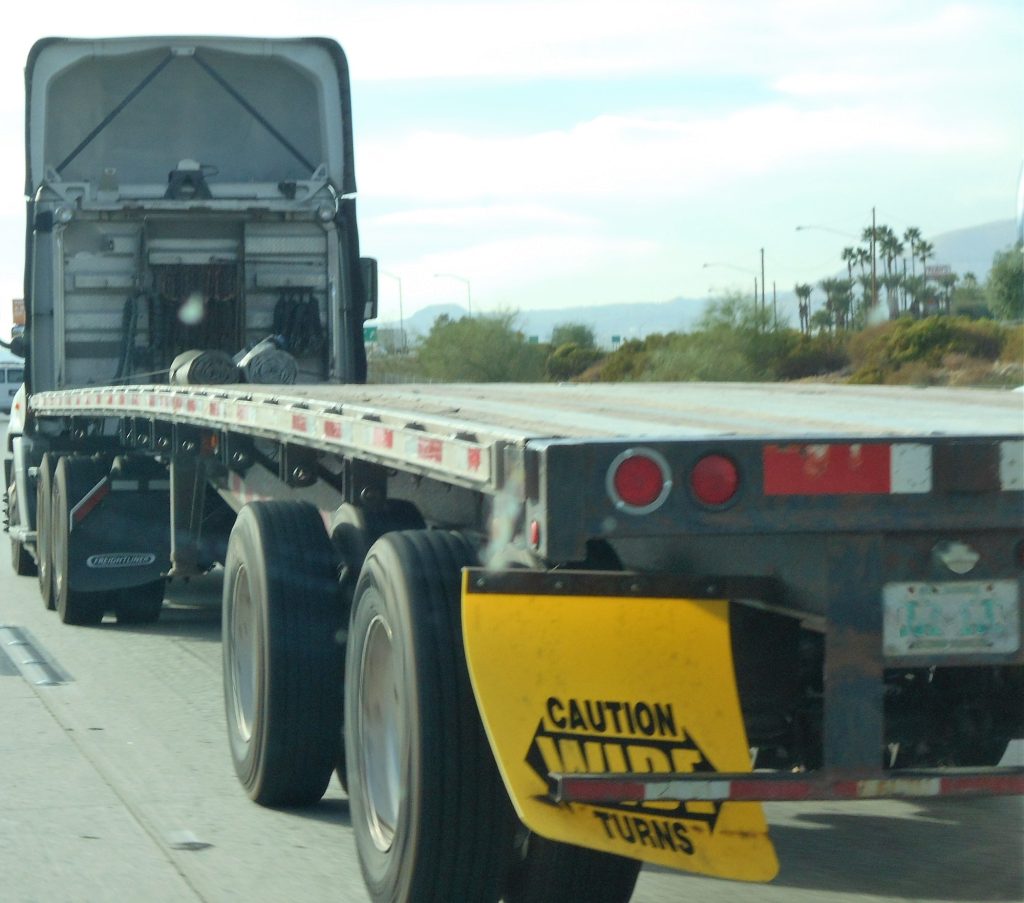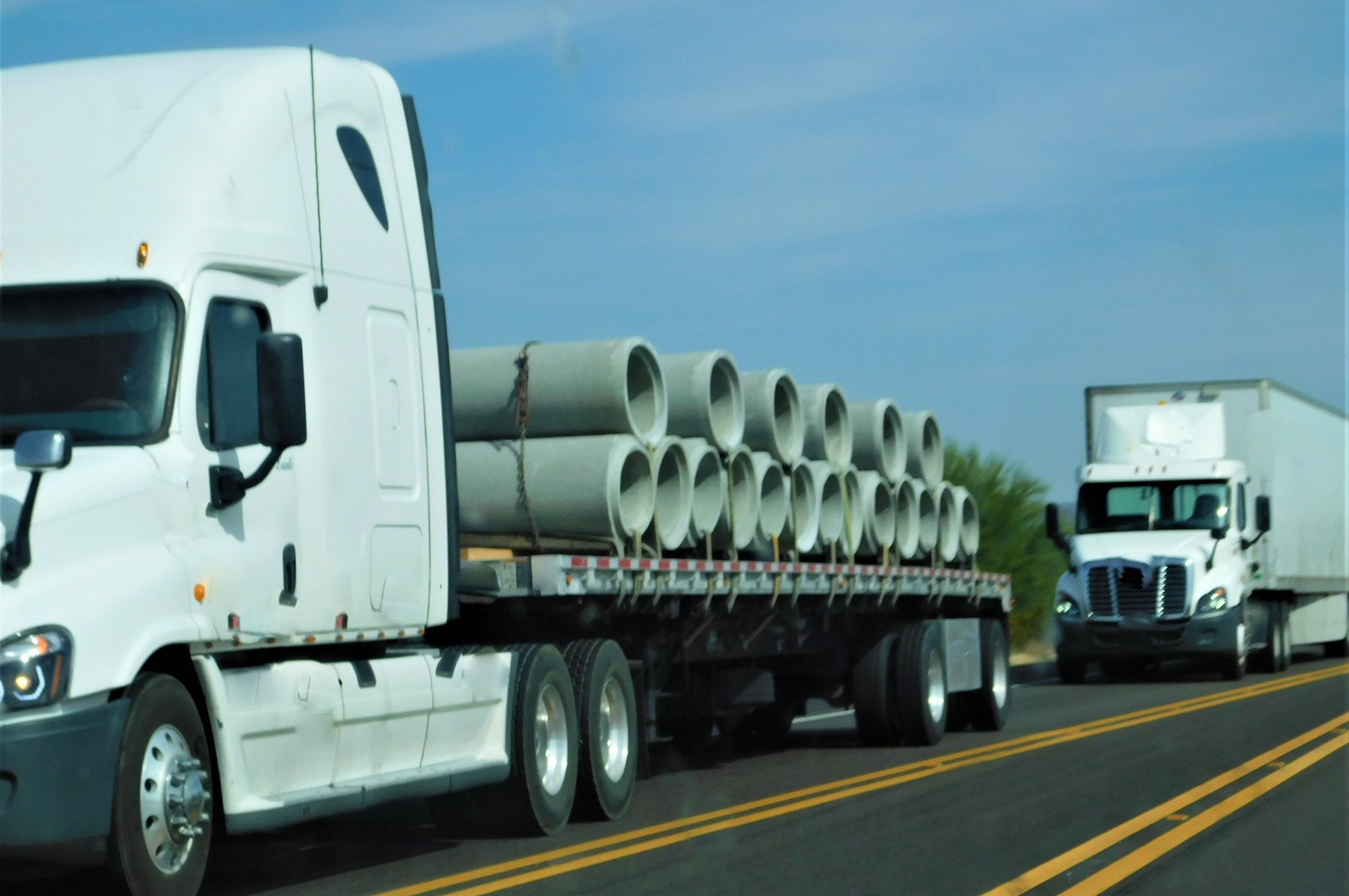What is a Flatbed Trailer? Uses, Advantages and Features
Freedom Heavy Haul can offer expedited Pickup and Delivery for any size shipment anywhere in the USA. Contact us today for No Hassle, No Pressure Pricing.
Flatbed trailers are a vital component in the transportation and logistics industry, offering unparalleled versatility and efficiency in hauling a wide range of goods. In this article, you will learn what is a flatbed trailer, exploring their definitions, types, applications, and safety considerations, among other topics.

By providing a thorough understanding of flatbed trailers, this article aims to inform both industry professionals and those with a casual interest in the field.
What is a Flatbed Trailer as a Logistics Term
In the logistics and transportation sector, the term ‘flatbed trailer‘ is fundamental. It describes a type of truck trailer characterized by an open deck without sides or a roof. This design makes flatbed trailers incredibly versatile, allowing for the transportation of goods that are unusually shaped, oversized, or otherwise unsuitable for enclosed trailers.
Their simplicity in design belies their critical role in moving a vast array of cargo, from construction materials to heavy machinery. Understanding the role of flatbed trailers in logistics is key to appreciating their importance in the supply chain, as they facilitate the efficient movement of goods that might otherwise be challenging to transport.
Defining Flatbed Trailers
A flatbed trailer is essentially a flat, open deck without sides or a roof, providing an adaptable platform for transporting a variety of goods. The lack of confinement on the deck allows for the transportation of oversized items or machinery that wouldn’t fit in a standard enclosed trailer.

These trailers are commonly used in industries such as construction, agriculture, and manufacturing, where large and heavy items need to be moved frequently. The design of a flatbed trailer offers ease of loading and unloading, which can be done from any side, making them highly efficient for certain types of cargo.
Flatbed Trailers Uses
In practical scenarios, flatbed trailers demonstrate their versatility and efficiency. They are indispensable in construction sites for transporting large machinery, building materials like lumber and steel, and even prefabricated components. In the agriculture sector, flatbed trailers are used for moving large equipment and bales of hay or other bulk materials.
Their open nature also makes them ideal for transporting heavy industrial machinery. The adaptability of flatbed trailers to carry a wide range of goods underlines their importance in various fields, making them a go-to choice for transporting large, heavy, or awkwardly shaped items.
Dimensions and Specifications
Understanding the standard dimensions and specifications of flatbed trailers is crucial for determining their suitability for different types of cargo. The standard flatbed trailer is typically 48 feet in length and 8.5 feet in width, providing a substantial amount of space for a variety of goods. In terms of height, these trailers are usually about 60 inches from the ground, offering a balance between ease of loading and low center of gravity for transportation.

The most common type of flatbed, the standard flatbed, is favored for its versatility, while specialized types like double-deck and double-drop trailers cater to specific cargo needs. The weight capacity of a standard flatbed trailer can vary, but they typically can carry loads up to 48,000 pounds. The durability and lifespan of these trailers depend on factors such as material quality, maintenance, and usage, but they generally offer several years of service. The flatbed load to truck ratio is a critical aspect in logistics, determining the efficiency and cost-effectiveness of transportation operations.
Choosing a Flatbed Trailer for Your Needs
Selecting the right flatbed trailer involves considering various factors such as the type of cargo, distance of transportation, and specific requirements like loading and unloading efficiency. When choosing a flatbed trailer, one must assess the size and weight of the cargo, ensuring that the trailer can accommodate it both physically and legally.
The type of goods being transported also dictates the choice, as certain materials may require specific trailer types for safe and efficient transport. Additionally, the route of transportation and its challenges, such as narrow roads or low bridges, must be considered to select a trailer that can navigate these constraints effectively.
Operating Flatbed Trailers
Operating a flatbed trailer requires adherence to safety guidelines and best practices, particularly during the loading and unloading processes. Drivers must be skilled in maneuvering these large vehicles and knowledgeable about securing cargo to prevent shifting or accidents during transit. Regular inspections and maintenance are critical to ensure the safety and longevity of flatbed trailers.
This includes checking the integrity of the trailer’s structure, ensuring that the tires are in good condition, and verifying that all lights and signals are operational.
Varieties of Flatbed Trailers
Flatbed trailers come in various types to cater to different transportation needs. Standard flatbed trailers are the most common and are suitable for a wide range of cargo. Double-deck flatbed trailers offer increased capacity by providing two levels for cargo, making them ideal for transporting large quantities of smaller items.
Double-drop flatbed trailers are designed with a lower middle section to accommodate especially tall items. Other types of flatbed trailers, such as extendable flatbeds and removable gooseneck trailers, provide solutions for specific logistical challenges, such as extremely long cargo or the need for a front-loading option.
Ensuring Safety During Loading and Unloading
Safety is paramount when loading and unloading flatbed trailers. This involves using proper securing methods, such as straps and chains, to keep the cargo stable during transit. Truck drivers must be trained in these techniques and aware of the regulations governing cargo securement. Additionally, safety measures such as wearing protective gear and adhering to loading dock protocols are crucial to prevent accidents.
Enhancing Safety Features on Flatbed Trailers
Improving the safety features of flatbed trailers is an ongoing process. Innovations in design and technology are continually being developed to enhance the safety of both the cargo and the operators. This includes advancements in materials used for the trailers, making them stronger and more durable, as well as the integration of modern securing systems and safety equipment. The use of technology, like stability control systems and advanced braking systems, further contributes to the safe operation of these vehicles.
Additional Considerations
When utilizing flatbed trailers, there are additional considerations to be aware of. This includes understanding the legal and regulatory aspects that govern their use, such as weight limits and cargo securement rules. Regular maintenance and upkeep are essential to ensure the trailers remain in optimal condition and safe to use.
Environmental impact is another consideration, as the efficiency of flatbed trailers can significantly affect fuel consumption and emissions. Lastly, staying abreast of technological advancements in trailer design and functionality can provide opportunities for increased efficiency and safety in flatbed trailer operations.







